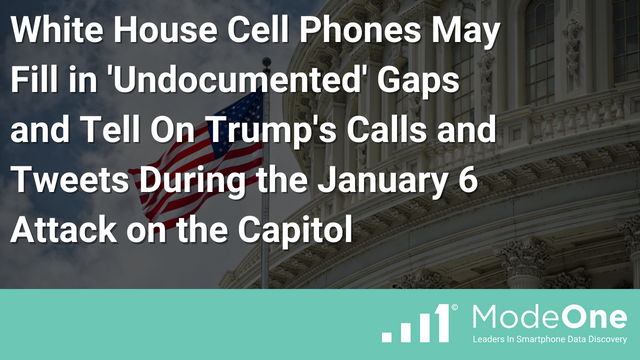Evidence of absence, or a lack of evidence, can present evidence of guilt or innocence under the law. The presumption of innocence under criminal law can make a lack of evidence for a defendant’s guilt sufficient for acquittal. On the other hand, the absence of evidence in the defendant’s favor, such as an alibi, can make their guilt seem more likely than not.
A lack of evidence represented a problem for the U.S. House of Representatives Select Committee to investigate the attack on the U.S. Capitol when it uncovered a gap in the presidential records, including phone records, from January 6. The problem persists for Jack Smith, who was appointed to serve as special counsel for the U.S. Department of Justice to investigate whether anyone violated the law in connection with efforts to interfere with the lawful transfer of power following the 2020 election.
But on December 11, Smith gave notice of anticipated expert testimony in U.S. v. Donald Trump in the U.S. District Court for the District of Columbia (Criminal No. 23-cr-00257), which includes an expert on cellular phone data and the use of Twitter and other phone apps to testify to the data they extracted, reviewed, and analyzed from White House cell phones used by Trump on and around January 6. Smith may get to the bottom of the data gaps using White House cell phones.
Backstory
The National Archives turned over records from the day of the attack on the U.S. Capitol, including Trump’s official daily diary and the White House switchboard call logs, to the House Select Committee investigating the January 6 attack. From testimony and the Presidential Daily Diary, the schedule that tracks the president’s meetings and phone calls, the Select Committee found 187 minutes, from 1:10 p.m. to 4:17 p.m., when Trump told the rioters to go home, undocumented. White House officials in charge of the Daily Diary’s maintenance had no credible explanation for the gap. (Final Report, Select Committee to Investigate the January 6th Attack on the United States Capitol, December 22, 2022, 117th Congress Second Session, House Report 117-663, p. 593.)
The records turned over to the Select Committee show a gap in President Donald Trump’s phone logs, according to documents obtained by The Washington Post and CBS News. The White House call logs had a seven-hour and 37-minute gap from 11:17 a.m. to 6:54 p.m. on January 6, while the Capitol was stormed, forcing Vice President Mike Pence and lawmakers to flee, as reported by Bob Woodward and Robert Costa of the Washington Post on March 29, 2022.
Woodward and Costa also reported that Trump was active on the phone in the morning and the evening of January 6. The seven-hour gap in the phone logs does not compare to other reports of Trump’s phone conversations published by the Washington Post and Associated Press. And the gap is inexplicable if you consider Trump’s enthusiasm for talking, on the phone or otherwise. Unless you turn off Cellular and Wi-Fi data on phones, they never stop talking, which is why cell phones are the new smoking guns, and smartphone discovery and data collection are critical in criminal and civil litigation and investigations.
Smartphone Discovery and Data Collection
Smartphones have become essential for communication, entertainment, and daily life management. They have become an indispensable part of our lives and for those that govern our lives in the White House. A successful criminal litigation or internal investigation requires a comprehensive smartphone discovery and data collection plan with a defined scope, objectives, timeframe, and roadmap implemented by a knowledgeable team armed with state-of-the-art tools, including ModeOne’s patented SaaS framework.
ModeOne’s game-changing technology collects data from Apple and Android mobile devices for litigation, compliance, and investigation purposes. It can focus the collection exclusively on relevant data within the scope of discovery for review. ModeOne uses a remote, targeted smartphone collection technology and proven processes that recognize individuals’ privacy interests in their smartphones and generally their right to control their data. Using ModeOne, case teams, e-discovery experts, and digital forensics professionals can discover relevant smartphone data without intruding on a custodian’s data and privacy and satisfy the needs of all constituencies, including law enforcement and the general public.
Hat Tip to Doug Austin and his daily eDiscovery Today blog for bringing this to our attention with “Cellphone Evidence from Donald Trump Could Be Key in 2020 Election Trial: eDiscovery Trends” (December 13, 2023).
